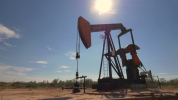Hi_Henry
The Living Force
The forecast is an attempt to look into the future. In the O&G Industry they do not have crystal balls. Instead they collect historical data from which they attempt to calculate reasonable forecasts into the future.That's a 'forecast' and has more to do with maintaining the illusion of scarcity than actual production and availability levels.
Considering the time that has past since that 2012 forecast, I'd say it is doing a reasonably good job. Current production data support that,
Denmark - 119 BBL/D/1K
Denmark Crude Oil Production
Crude Oil Production in Denmark increased to 70 BBL/D/1K in January from 65 BBL/D/1K in December of 2024. This page provides the latest reported value for - Denmark Crude Oil Production - plus previous releases, historical high and low, short-term forecast and long-term prediction, economic...
UK - 1117 BBL/D/1K
United Kingdom Crude Oil Production
Crude Oil Production in the United Kingdom increased to 681 BBL/D/1K in January from 641 BBL/D/1K in December of 2024. This page provides the latest reported value for - United Kingdom Crude Oil Production - plus previous releases, historical high and low, short-term forecast and long-term...
Norway - 1417 BBL/D/1K
Norway Crude Oil Production
Crude Oil Production in Norway decreased to 1773 BBL/D/1K in January from 1810 BBL/D/1K in December of 2024. This page provides the latest reported value for - Norway Crude Oil Production - plus previous releases, historical high and low, short-term forecast and long-term prediction, economic...
So mid 2019 forecast in the graph I provided is not way off. Hence, their decline rate forecast was not bad but then such is the behavior of a non-renewable resource (within humanities life span). They decline, something that they are well aware of in this industry.
These pumping jacks are not installed to create a scarcity and hide production. Producers are there attempting to maximize profit and minimize cost in order to get the most from their investment. Thus they use them because the flow rates are so low that this is the most economical way to extract what is left underground.
Here we can see pumping jacks in Bahrain which wouldn't shock anyone familiar with the industry there.
Caspian Sea region

